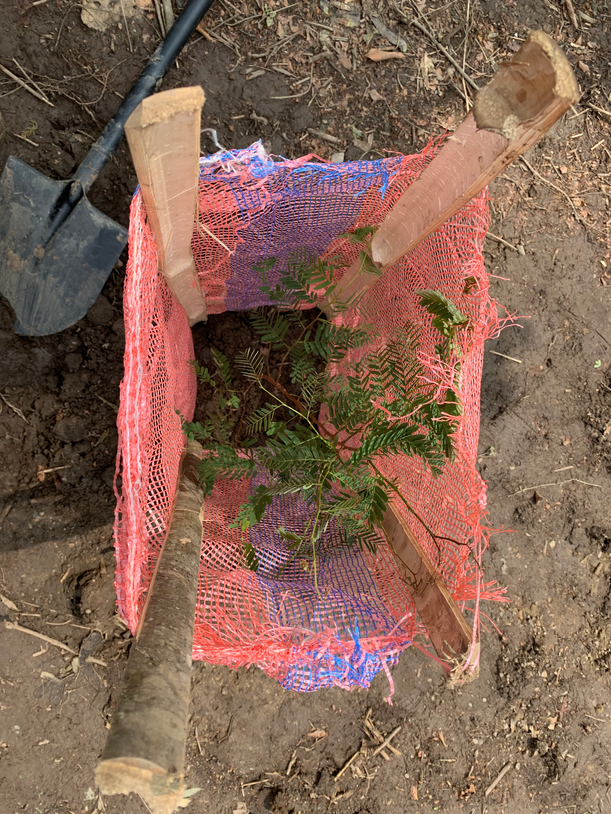
COMPANY PROJECTS -
GO CARBON NEUTRAL

FOOD FOREST CHITWAN
REGENERATING PRODUCTIVE FOREST CHITWAN,Nepal
Chitwan Nepal - bordering India, located 160km south from Kathmandu, the capital of Nepal. The Chitwan district is mostly known due the Chitwan National Park, one of the largest national parks in Nepal, home of a large number of wildlife, like the Indian Rhino, Leopard and the Bengal Tiger. This restoration is required due to the presence of toxic invasive species (up to 3m high) and degraded land in these community forest, and to aid new trees to grow (natural regeneration) and existing trees to survive.
The project is implemented in collaboration with community forest user groups and Nepal forest department. The plantation occurs in three community forests: Kankali community forest, Thangkhola community forest, Shree Bandevi Barandabar buffer zone community forest, with a focus on enhancing local biodiversity, improving ecosystem health, and providing long-term benefits to the community. The project involves a diverse mix of native tree species carefully selected based on the specific needs of the local environment and ability to thrive in local condition. These species were chosen for their ecological value and potential to provide resources such as food, medicine, and additional income to local residents. The initiative aims to restore degraded lands, increase forest cover, and create productive forests that can support both nature and the local economy.
The following interventions are made by the Green Intelligence and partners:
-
Selection of trees species with community and forest department
-
Removal of invasive bushes
-
Plantation training
-
Large size pitting and addition of fertilizer (cow dung)
-
Planting mix of productive tree species
-
Fencing for animal protection
-
Hiring local forest guard (3yrs)
-
Protecting for natural regeneration
The Productive Food Forest
The project focusses on re-greening, land resilience, biodiversity and productivity. Due to the plantation wildlife is expected to increase in the community forest, like Tiger, Axis axis Rhino and leopards. The productivity will grow due to the plantation of productive species, like Amala(Phyllanthus emblica), Neem(Azadirachta indica), Moringa(Moringa oleifera), Imili(Tamarindus indica), Harro(Terminalia chebula), Barro(Terminalia bellirica), Bael (Aegle marmelos Correa) and Tej Patta(Cinnamomum tamala) amongst others. These species will generate additional food and income for the community members living nearby the forest. For most recent updates check our Facebook and Instagram.
The project is implemented in partnership with the Community Forest User Groups (CFUG) and the Nepal Forest Department. In 2022 and 2023 seven hectares has been implemented. In 2024 the project is extended with an additional 11 hectares.
Download the 3-pager elaborating on the 2024 activities in Chitwan using the below button:
Country
Nepal
Type
Food and Biodiversity forest
Location
Chitwan
Landscape
Community forest
Year
2022-2024
Status
Planted

THE IMPACT

















